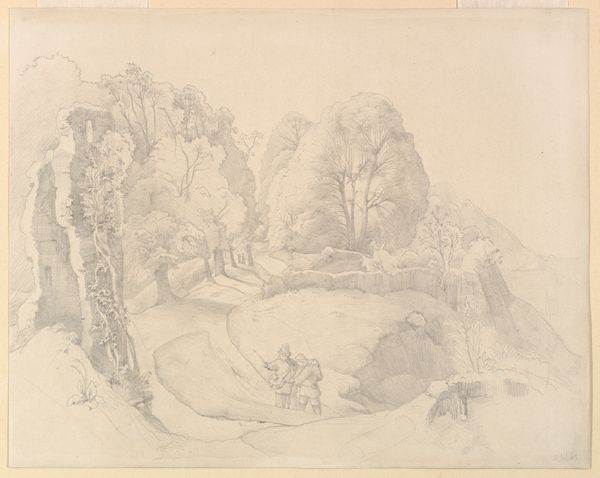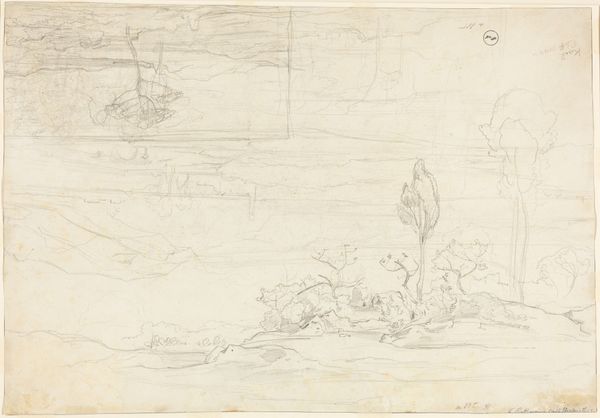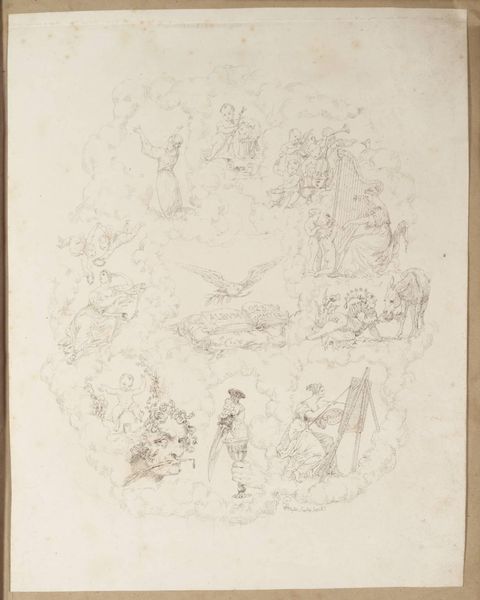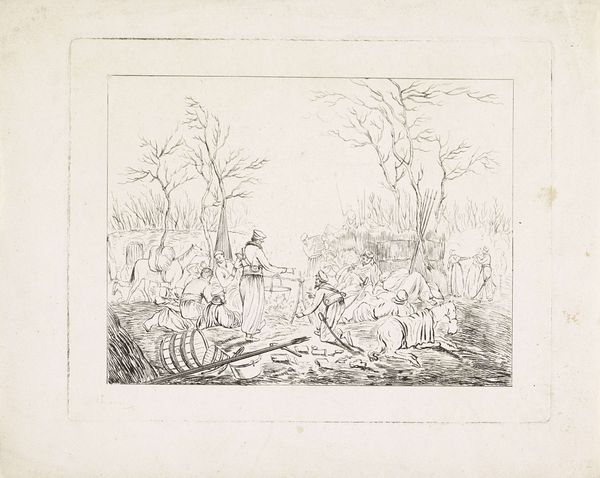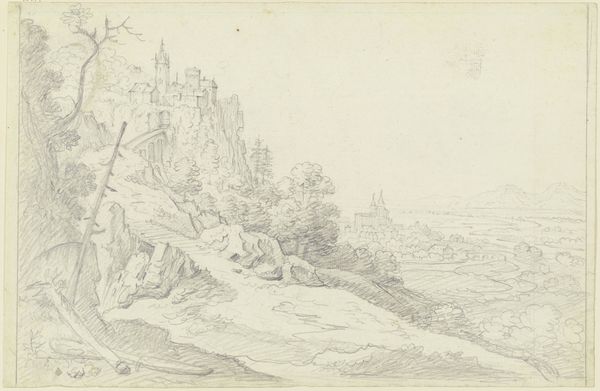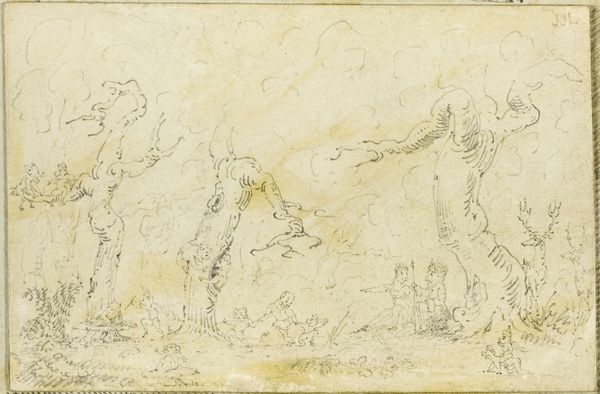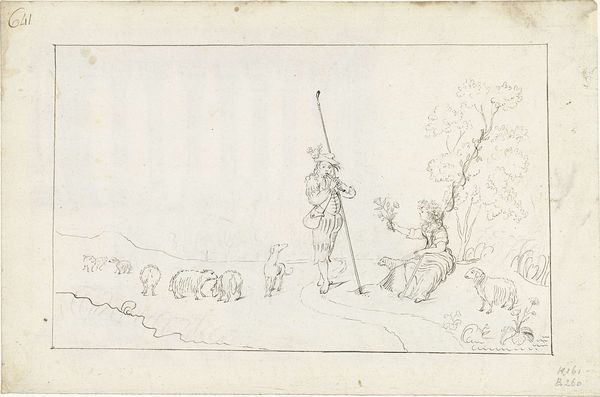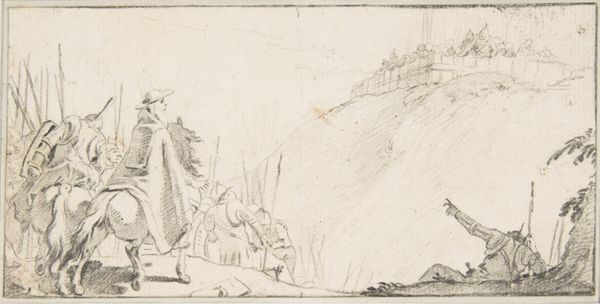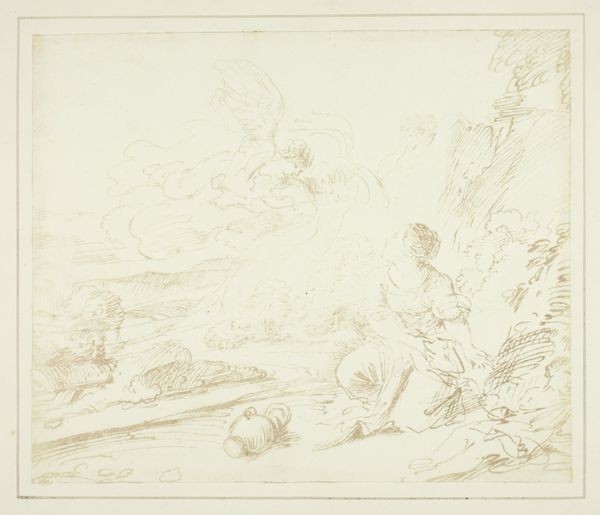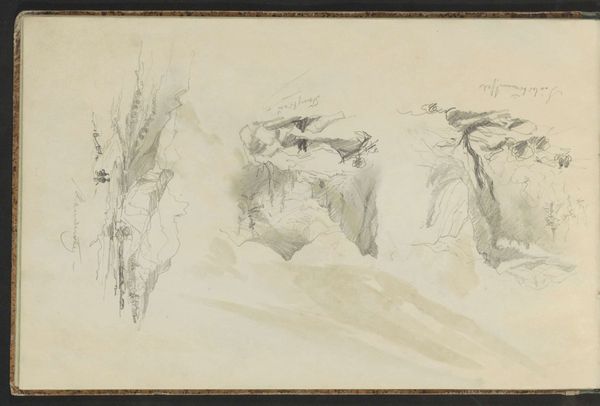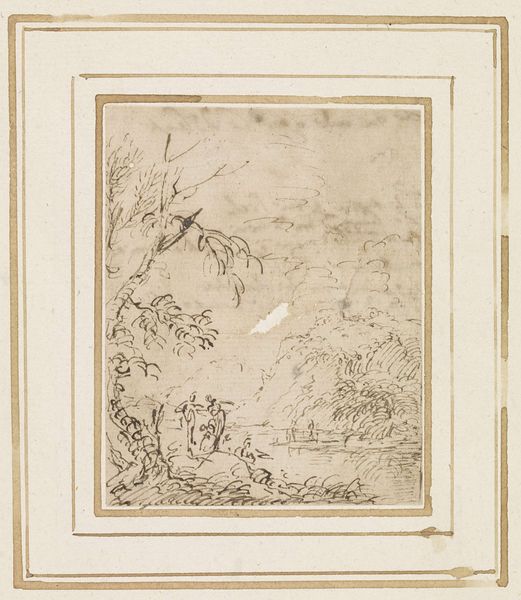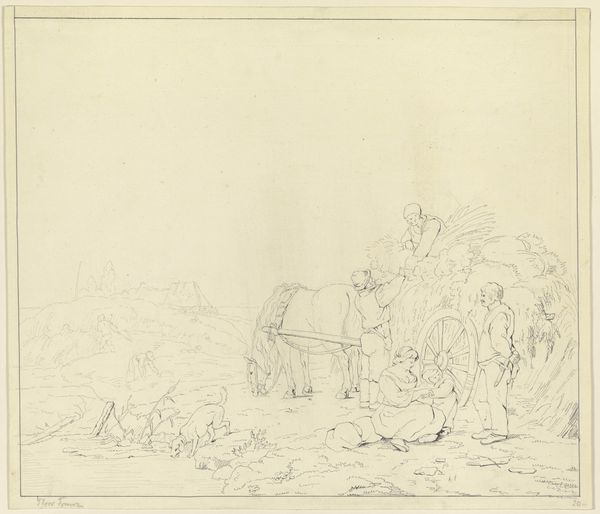
drawing, ink, pencil
#
drawing
#
comic strip sketch
#
neoclacissism
#
quirky sketch
#
figuration
#
personal sketchbook
#
ink
#
idea generation sketch
#
sketchwork
#
ink drawing experimentation
#
pencil
#
sketchbook drawing
#
history-painting
#
storyboard and sketchbook work
#
sketchbook art
#
initial sketch
Dimensions: height 332 mm, width 382 mm
Copyright: Rijks Museum: Open Domain
Editor: Here we have Teodoro Matteini’s drawing, "Engel knielend voor God de Vader op zijn troon," created in 1808 using ink and pencil. It’s a pretty spare composition, featuring a kneeling angel before God on his throne amidst some other narrative details... What stands out to you? Curator: It's interesting to consider this drawing in relation to the revival of classical styles at the time. Neoclassicism often served to legitimize authority figures by associating them with the perceived virtues of ancient Greece and Rome. What might it signify that Matteini situates God, instead, as the subject of neoclassical admiration, if we consider Neoclassicism to be politically motivated? Editor: That's interesting! I hadn't considered how the artistic style itself contributes to the image’s meaning beyond just the figures depicted. So, it's not just *what* is being shown but *how* it's being shown that matters politically. Curator: Precisely. How does the deliberate choice of portraying God in this manner – in a style reminiscent of classical rulers – influence the public's perception and understanding of religious authority, particularly at a time of shifting social and political landscapes? Editor: It kind of makes it more relatable, giving him visual status. Were there controversies at the time on representing religious figures this way? Curator: There were certainly ongoing debates about the proper role and representation of religious figures in art. The increasing secularization of society meant artists had more freedom – or perhaps more pressure – to engage with religious themes in new and often challenging ways, depending on where their patronage stemmed from. Editor: That's fascinating. It really shifts how I see the drawing. I initially viewed it just as a biblical scene, but understanding the context makes it much richer. Thanks! Curator: Indeed. It showcases how art continually negotiates its role within the power structures and prevailing ideologies of its time. Thinking about an artwork's socio-historical conditions enhances its viewing every time!
Comments
No comments
Be the first to comment and join the conversation on the ultimate creative platform.
